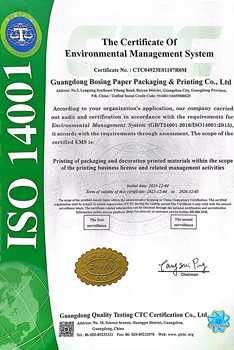
In the dynamic world of cross-border e-commerce, the first physical touchpoint between brands and their global customers isn’t a website or an advertisement—it’s the paper box that arrives at their doorstep. These seemingly simple containers have evolved into powerful marketing tools, cultural ambassadors, and brand storytellers that bridge continents and create unforgettable customer experiences. The humble paper box has transformed from mere packaging into a strategic asset that can make or break international business relationships.
The journey of a cross-border e-commerce package is nothing short of remarkable. From manufacturing facilities in one country to distribution centers across oceans, and finally to customers’ hands in distant lands, these paper boxes must withstand rigorous handling, varying climate conditions, and complex logistics networks. Modern cross-border paper boxes are engineered with reinforced corners, moisture-resistant coatings, and smart structural designs that ensure products arrive in pristine condition, regardless of the distance traveled or the transportation challenges encountered.
Beyond protection, these boxes serve as silent salespeople in markets where brands may have limited physical presence. The exterior design communicates brand identity before customers even open the package. Multilingual labeling, international symbols, and culturally appropriate color schemes help brands navigate diverse global markets seamlessly. Smart brands leverage this valuable real estate to reinforce their messaging, showcase their values, and create instant recognition in crowded marketplaces across different continents.
Sustainability has become a non-negotiable aspect of cross-border packaging. Environmentally conscious consumers worldwide now expect eco-friendly solutions, and forward-thinking companies are responding with paper boxes made from recycled materials, using soy-based inks, and implementing designs that minimize waste. The circular economy approach isn’t just good for the planet—it’s becoming a competitive advantage that resonates with global shoppers who increasingly make purchasing decisions based on environmental considerations.
The unboxing experience represents a critical moment of truth in cross-border commerce. Brands that master this moment create emotional connections that transcend geographical boundaries. Thoughtful interior packaging, personalized notes, and surprise elements turn ordinary deliveries into memorable events that customers eagerly share on social media. This organic amplification becomes particularly valuable in new markets where brand awareness is still developing, creating viral moments that traditional advertising cannot replicate.
Customs compliance and international shipping regulations add another layer of complexity to cross-border paper box design. Successful brands work with packaging partners who understand the intricate requirements of different countries, from labeling specifications and documentation needs to restricted materials and dimensional limitations. This expertise ensures smooth customs clearance and prevents costly delays or returns that can damage customer relationships and brand reputation in international markets.
Technology integration is pushing cross-border paper boxes into the future. QR codes linking to multilingual product guides, augmented reality experiences, and track-and-trace systems enhance customer engagement while providing valuable data about shipping performance and consumer behavior across different regions. These smart features transform static packaging into interactive platforms that extend the brand experience beyond the physical product.
The economic impact of optimized cross-border packaging cannot be overstated. Well-designed paper boxes reduce shipping costs through dimensional optimization, decrease damage rates that lead to expensive returns, and improve customer satisfaction that drives repeat purchases. In markets where acquisition costs are high, the packaging becomes an investment in customer retention and lifetime value calculation.
As cross-border e-commerce continues its rapid growth, the paper boxes that facilitate these global transactions will only become more sophisticated. The future points toward hyper-personalization, where packaging adapts to individual customer preferences and local market trends, and increased automation in packaging processes to handle the scale of global operations. Brands that recognize the strategic importance of their cross-border paper boxes position themselves for sustainable international growth.
In conclusion, cross-border e-commerce paper boxes represent far more than simple containers—they are multidimensional tools that protect products, communicate brand values, ensure regulatory compliance, and create emotional connections across cultural divides. As the bridge between digital storefronts and physical delivery, these paper boxes carry the weight of global brand perception and customer satisfaction. In the increasingly competitive landscape of international e-commerce, investing in sophisticated paper box solutions isn’t just good practice—it’s essential for building lasting relationships with customers around the world.




Leave a Message